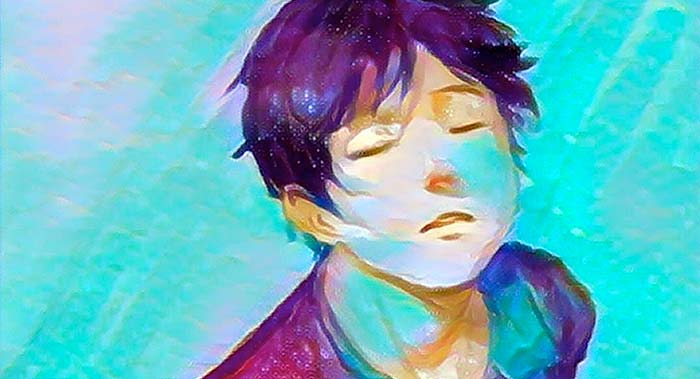

I was five years-old when I first entered the closet. I kissed a girl at recess and was scolded by my teacher, “girls shouldn’t kiss other girls on the lips.” (Note: If you read my name and are confused, this was 15 years pre-transition from female to male.) In contrast, the kisses I planted on boys at recess were acceptable. Surely this experience is not unusual for American children, particularly those having grown up in small towns before the liberation of queer youth in the 2010s. My bisexuality was not necessarily revolutionary, but exhibits of same gender attraction were definitely unwelcome. Yet there was another incident in my kindergarten career that kept me in the closet, one separate but unexpectedly linked to the topic of my sexuality.
It was the day five year-old me was brought in for a parent/teacher conference regarding my interest in anime. I had drawn a picture of anime heroine Sailor Moon fighting villains, and the question was whether this was acceptable material for a child to be emulating. Sailor Moon is a popular Japanese animation of the 1990s that teaches lessons of acceptance, feminism, and friendship. American cartoons, like Looney Toons, were apparently acceptable to the adults in my life, despite the material of such being arguably raunchier. This was around the time little me brought anime into the closet along with my sexuality where I would not proudly reemerge until my adult years.
Much like with queer individuals (Note: In this analysis, I will refer to “queer” as an umbrella term for non-heterosexual identities), queer representations in anime have been and are currently still kept in the closet. The community is often overtly sexualized in anime, but more often than not, we are made invisible. The biggest contributing factor is censorship by Japanese studios and American networks. Censorship in this case can be cutting funding for an anime after backlash, English dubbing that fails to translate same gender attraction, editing animation cells to hide visuals of queer romance, and more. Neither Japan or the United States have official codes against representations of same gender romance in anime, but the actions of studios and networks reflect a generalization of profanity as seen with Sailor Moon (1991) and Neon Genesis Evangelion (1995).
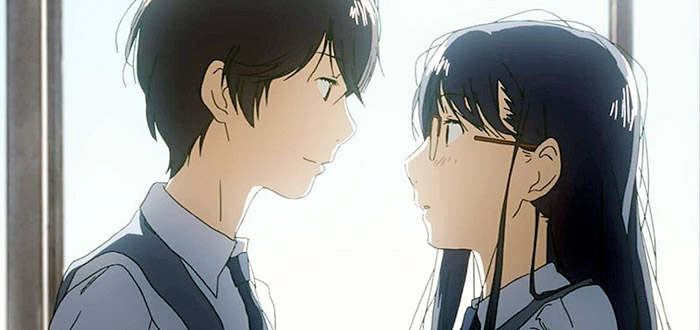
Such censorship is harmful to fans of anime, and it reflects a societal ideology situating same gender romance as profane. Queer anime is kept in the closet and the closet contributes to the marginalization of queer individuals. Anime rarely represents queer individuals well, and though newer examples like Yuri. On Ice (2016) come close, they still fall into the same closet kept only slightly cracked by studios and networks. There have been a few positive improvements, like the somewhat rare No.6 (2011), but a medium with over 400 animation studios has an unacceptable trend of negative queer representation. I believe drawing awareness to this underrepresentation is one of the steps in bringing positivity to a marginalized community. In order to understand how and why this censorship occurs, one must first take a step into Japan’s history with anime and sexuality.
Anime is characterized by hand or computer drawn animation originating and produced in Japan. Popular anime in Japan are distributed to the American market, either translated with English subtitles or dubbed with English speaking voice actors. Anime scholar Robin E. Brenner suggests the origins of anime reach as far back as kabuki theater in terms of styles of storytelling, but when Japan became influenced by Western comic strips and cartoon reels in the early 20th century, the country began to develop its own modern visual media: manga, and then anime. Manga is Japanese style comics, which anime is commonly adapted from. Author of Anime’s Performativity: Diversity through Conventionality in a Global Media-Form, Stevie Suan identifies manga through “practices of panel layouts, common conventionalized facial/bodily expressions, as well as character design styles and narrative content” and for anime, the addition of “voice acting styles, background, world-setting and sound designs,” and the more nuanced “techniques of animation, styles of movement, narrative structure and pacing.” (Suan, 64) The formulaic narrative and visuals of anime lends itself to fast production and high demand. An important key in the creation and distribution of anime is the categorization through genre. While there are categories of anime similar to those in Western media such as drama, comedy, horror, etc, two different major genres exist in the anime industry: shōnen and shōjo, literally translating to young boy and young girl, respectively. The gendering of anime is part of how the tropes and messages within the formula work.

Shōnen has dominated the anime industry since anime’s emergence as a major marketable visual medium. Science fiction was one of the initial popular subsets of shōnen with roots in the classic, Astro Boy (1952). In the 1980s, the giant robot subgenre of shōnen, otherwise known as mecha, rose to popularity. Mecha was influenced by the emergence of new technology like computers, VHS, and cellphones into everyday life, and the paranoia that came with it. (Brenner, 66) Mobile Suit Gundam (1979) and Macross (1982) were major mecha series that gained notoriety in Japan and the United States. With influence from George Lucas’ films into the 1990s, space opera shōnen like Outlaw Star (1996) and Cowboy Bebop (1997) became popular series’. At this time, the distribution of anime to American television networks targeted to a young male audience had begun. Major shōnen series’ Dragon Ball Z (1989), Yugioh (1996), and Naruto (1999) were huge successes in the United States likely because of their similarities to American comic book heroes, but through a new style that mixed fantasy and martial arts. Pet companion shōnen like Pokemon (1997) and Digimon (1999) also became huge hits based on Tamagotchi toys, and though these series’ emphasized ensemble casts, they mostly focused on the development of the male protagonists through fantastical fighting tropes. Unlike American cartoons which have largely been dominated by Disney films and Warner Brothers, anime geared at children maintains a layer of adult content as most shōnen deal with topics of violence, family abandonment, and death. On the other end of the spectrum, shōjo , the genre geared at young girls, tends to work through different topics.

An argument against classic Disney cartoons has been the emphasis on princess role models for young girls, while male role models are of a wider selection. This argument can be applied to anime and the gendering of genres, as well. Shōjo tends to deal with topics of romance, friendship and femininity through the lens of female characters. Many early shōjo stories took place in school settings, relying on realism with formalist techniques derived from manga. As a pushback against shōnen, the magical girl subgenre became the most popular form of shōjou with classics like Sailor Moon (1991), Revolutionary Girl Utena (1997), and Cardcaptor Sakura (1998). For this type of anime, young female protagonists are imbued with magical powers to fight (typically male) villains, often with the help of their female friends. Tropes of this genre include princess-like outfits, sparkle effects, soft pink hues, and flowers either in the narrative or as effects. While this genre also deals with fighting like in shōnen, shōjo fights are far less bloody, and often resemble dance instead of martial arts. Probably the biggest difference between shōnen and shōjo, apart from the obvious “girl power,” is the heavy emphasis on romance. Nearly every episode of Sailor Moon, Revolutionary Girl Utena, and Cardcaptor Sakura has a romantic subplot regarding the main character or one of her friends. Yet an interesting aspect of the magical girl genre and the above mentioned anime is the inclusion of queer themes. While Utena‘s homosexuality is veiled under a layer of abuse, nonconsensual sex, and slavery, it does include strong themes of both female/female attraction and male/male attraction, all ending by tragic means. In Cardcaptor Sakura, both boy and girl characters state their attraction to same gender individuals. CLAMP, the publisher of the Cardcaptor Sakura manga, has been widely known for consistent representation of queer themes. Another subcategory of shōjo known as moe, is a genre encompassing young relationships and cuteness, mostly targeted at heterosexual male fans. Moe has been criticized for its fetishization of young women and girls, with Lucky Star (2007) as an example. Many have found queer representation in these depictions, albeit inauthentic and fantastical, as the characters often share same gender kisses and affection. However, queer representation in anime cannot be fully understood or deconstructed without a deeper analysis of Japan’s history with sexuality.
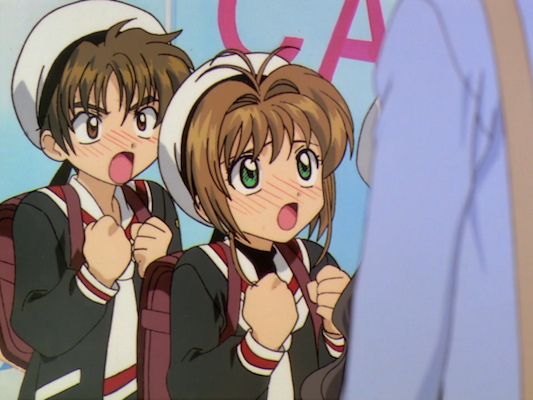
Japan as country exhibits a strong assertion of nationalism and preservation of culture, meaning the society has also adopted a sense of cultural cohesion which, unlike in Western societies, does not outwardly condone individuality. Thus, in Japan, one does not always assert feelings or behaviors that would draw attention to difference. Interestingly enough, this avoidance of emotional expression applies to how the Japanese say, “I love you” or more so, how they don’t. It is common for romantic couples to say “suki da” which literally means, “I like you.” The phrase, “aishiteru” means “I love you” but is not often used. The choice to use a phrase without as much emotional depth could be due to Japanese not wishing to draw attention to personal feelings, as such would accent individuality. Applying to both heterosexual and queer relationships, stating one’s love is not common in Japanese society, thus the Western notions of romance do not always apply in Japanese culture.
Before World War II, Japan was known as a closed culture with a firm emphasis on the traditional family structure to promote nationalism and growth of the population. Masami Tamagawa discusses the root of this concept in Coming Out to Parents in Japan: A Sociocultural Analysis of Lived Experiences:
Rooted in Confucianism, the traditional Japanese family system was defined as a basic unit of Japanese society in the Meiji Constitution (1890), enforcing various familial duties on its members based on gender and seniority. Although the old system was abolished in postwar Japan, Japan’s family tradition persists, due mainly to the national family registry called ‘koseki.’ Remaining nearly unchanged, Japan’s family registry continues to oblige all Japanese households to register their family members based on the traditional family system. Each family registry is hierarchically organized, thus subjugating women and excluding LGBT individuals. (Tamagawa, 5)
Despite the necessity for a traditional family system, Japan’s recorded history of homosexuality dates back as far as the 11th century. Tamagawa describes historical evidence of male/male romance in kabuki theater, as performers were always male and resided in close quarters with one another. It was also common for older men to be involved in romantic relationships with younger men and boys around this time. Homosexuality continued with Emperors and in religious institutions, then became very popular among samurai warriors who were often traveling without women. Hishikawa Moronobu depicted same gender love between samurai in 1680s era nanshoku erotic art, one of many artists to do so during the Edo period. However, Tessa Morris-Suzuki, author of The Invention and Reinvention of “Japanese Culture” says Japan’s historical stress on “national culture,” including the demoralization of homosexuality, was tightened in the 19th century with influence from Europe. This change can be attributed to the enactment of the Meiji Constitution.
The Meiji Constitution and the French influenced Keikan code of 1881 condemned homosexuality as a deviant act and demoralized men appropriating femininity. Gregory Pflugfelder, a scholar of gay male romance in Japan, suggests how this major change in Japanese morals was derived from the fear that men in homosexual relationships would become more like women, thus challenging reproduction. Sadly, not as much is known about queerness between women in early Japan, but it has been suggested that as long as women bore children, they were allowed to engage in same gender romance. The closeting of queer individuals in Japan persists today, over half a century after Japan was forced to open its culture post-war. A 2007 study done by REACH Online found that among gay and bisexual men in Japan, about 8% of the participants had come out to both parents, 6% to mothers, and less than 1% to fathers. The article also discusses how “pink films” or lesbian pornography stigmatizes female/female love as a fetish and does not make it easy for lesbians to come out in Japan. Some queer individuals in Tamagawa’s research said they felt more included in LGBT subcultures of manga and anime; however, most of those depictions of queer romance were only in sexualized, pornographic-esque publications known as yaoi and yuri.
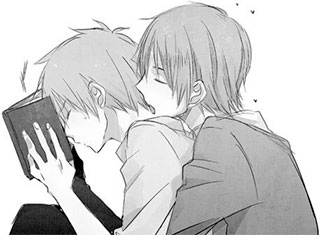
Similar to the gendered categories of anime (shōnen and shōjo), yaoi and yuri have specific marketable tropes. Tamagawa describes yaoi or “Boys Love” manga and anime as stories of “romantic relationships between effeminate young boys” which grew in popularity starting in the 1970s. These publications are popular among fujoshi, or young women, mostly heterosexual, who enjoy reading male/male romance. Common features of yaoi are men who look and sound like women, known as bishōnen, who are often coupled with larger, more masculine men. This type of coupling asserts the heteronormativity of “traditional” relationships in which one must be feminine and one must be masculine. With this trope, many yaoi also depict abuse and negative power dynamics which further demoralize male/male romance for a heterosexual audience. Yuri or “Girls Love” has been less popular, but center around female/female relationships. These publications can fall into heteronormative tropes of masculine and feminine couplings, but more commonly, yuri stories are populated with highly sexualized images of young women.
These points are not meant to ignore queer readers/viewers of yaoi and yuri, though it has been noted that the vast majority of marketing and demand is for heterosexual audiences. With heterosexual fans and creators saturating queer stories, a less authentic view of the LGBT community arises. One cannot mention yaoi and yuri without acknowledging manga fanworks or doujinshi often created to portray preexisting characters in queer relationships. The greatest market for yaoi and yuri exists within these fanworks, but given the production and distribution of anime, it’s unlikely that fandom plays a role in the influence of queer themes in canon works. That being said, it’s important to note that fanmade doujinshi also tend to adhere to the harmful stereotypes and tropes that demoralize the queer community, as well as predominately being made by and for the heterosexual community. To this day, yaoi and yuri are still some of the only depictions of queer romance in Japan, but fans, queer and otherwise, have shown a hunger for more positive representations that don’t fetishize, demoralize, or present same gender love in dishonest ways. Queer fans of anime deserve better than what we have been dealt, thus we must set out to find positive representations and uncover why such anime have been censored by Japan and the United States.
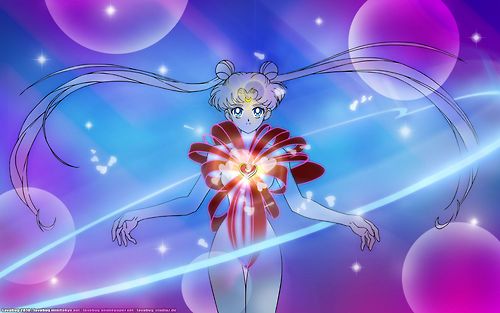
With 200 episodes produced by Toei Animation and airing from 1991-1997, Sailor Moon became the most popular series within the magical girl genre, and is considered an anime classic. Based on the manga by highly talented female writer, Naoko Takeuchi, Sailor Moon recounts the story of Usagi Tsukino, a high school girl empowered with magic to become Sailor Moon and fight villains threatening the universe. Usagi fights to save humanity with her other planet-named friends, the Sailor Scouts (Note: If you only watched the English dubbing version, Usagi’s name was Serena). With a cast of over eight strong female characters, the series contains themes of feminism and empowerment, while also following romance tropes of the shōjo genre. Usagi herself is in an on-again, off-again romance with a male character, but this anime is notorious for its representation of the female/female relationship between two Sailor Scouts, Uranus and Neptune. This relationship was considered revolutionary for its portrayal and though Uranus and Neptune never kiss or openly state they love one another, they are icons for the queer community.
Uranus and Neptune were first introduced in the third arc of the anime in episode 92 titled “A Handsome Boy? Haruka Tenoh’s Secret.” In this episode, a handsome boy, Haruka, is lusted after by Usagi and Minako, aka Sailor Venus. Despite Haruka returning the girls’ flirtation, it is revealed that he is taken by a beautiful blue-haired girl named Michiru. To make things all the more complicated, by the end of the episode it is revealed that Haruka is not a boy, but a girl who dresses and acts very masculine. She is also Sailor Uranus, while Michiru is Sailor Neptune. Haruka and Michiru’s relationship is not portrayed in a negative or particularly humorous light; they are simply “together” as Haruka states. In episode 95, the two enter a “Lovers Contest” and when the announcer tells the contestants to call out their girlfriend’s name, Haruka calls for Michiru. The representation of this romance is noteworthy in the way these characters are drawn together, sharing obvious intimate looks, gestures, and holding hands. The dialogue they share is very romantic, and Haruka and Michiru often discuss their intimacy with one another. A level of unconscious censorship was enacted with the Japanese version of this series, as Uranus and Neptune don’t ever share a kiss, but Usagi and her boyfriend share about four onscreen kisses in the series (a high number even for heterosexual couples in anime). This censorship could be attributed to Japan’s bias against homosexuality still being worked through from the Meiji Constitution and Keikan code. However, when the series was dubbed and imported to the United States, the relationship between Uranus and Neptune was majorly censored.
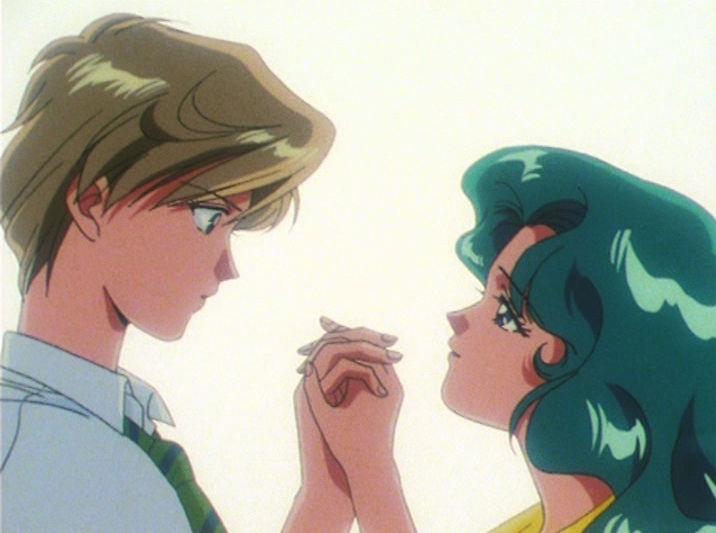
When episode 92 aired in the United States on Fox Kids, the line Haruka used in the Japanese version to say she is together with Michiru is changed to say she is not with Michiru. During the romantic gazes, gestures, and hand holding, Haruka and Michiru assert they are just friends. Then, in later episodes of the American version of the series, the two are said to be cousins. In episode 94, Michiru discusses her first kiss was with a boy named Brad, while in in the Japanese anime, the kiss she refers to is between biblical Adam and Eve, not a kiss involving herself. In a Huffington Post article titled Sailor Neptune and Uranus Come Out of the Fictional Closet, Sara Roncero-Menendez discusses how this relationship was censored in the United States to avoid themes of homosexuality in a show aimed at young girls. So, rather than allow a very tame relationship between two young women be portrayed in the anime, the American network preferred to turn the romantic gestures of Uranus and Neptune into something totally different, even if the characters’ actions made the relationship near incestuous. Students from the University of Minnesota translated a 1996 interview from Kappa Magazine in which series creator Takeuchi stated, “The relationship between Haruka and Michiru is quite special… There’s not only heterosexual love, but there also can be a homosexual love, in this case between two girls.” She was not happy with the changes made to Haruka and Michiru’s relationship in the English dubbed version.
The censorship of Sailor Moon did not end with Uranus and Neptune. In the original anime, two male villains Kunzite and Zoisite were portrayed as romantically involved. They were cut in the American version. Sailor Star Fighter, who had a crush on Usagi and was originally female in the Japanese version, was changed to male in the American anime to make the attraction heterosexual. This censorship could be seen as another indicator of the American networks’ desire to avoid queer themes.
The good news about the representation in Sailor Moon is that in 2015, a reboot titled Sailor Moon Crystal aired in Japan and made it more clear that Uranus and Neptune are a romantic couple, and are not cousins. They share more romantic gestures in season three of the new anime and with it being aired online through the streaming site Crunchyroll, the series is virtually the same for Japanese and English speaking audiences. The new series is not without its faults, as there is an episode of Sailor Moon Crystal in which Haruka kisses Usagi against her will, which demoralizes same gender attraction in a sense, though the act is later apologized for. This case; however, shows that Japan’s steps toward queer representation are still baby steps. Overall, Sailor Moon and all of its iterations, is one of the most important anime in showing how queer representation is censored in Japan and the United States.
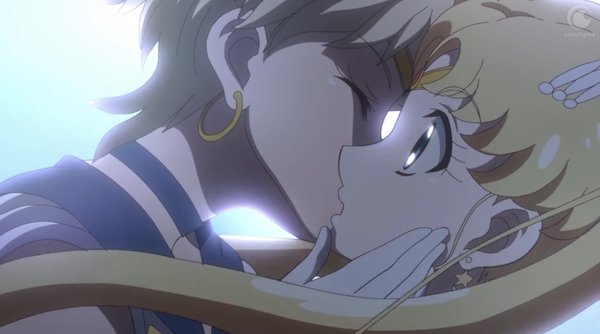
Back into the realm of shōnen, the classic mecha anime Neon Genesis Evangelion broke boundaries during its original 26 episode run between 1995-1996. Written and directed by Hideaki Anno and produced by Gainax, the series is set a decade after near worldwide destruction by massive creatures called Angels. The futuristic city of Tokyo-3 now uses giant robots piloted by teenagers to defend the world from the remaining Angels. This series was incredibly unusual for the way it subverted conventions set by the mecha subgenre, and in an interview in the special features of RahXephon Complete, Anno stated that he originally wanted the anime to follow traditional conventions, but he was happy that it became an “anti-mecha” anime because it contained more emotion that way. The main character of Neon Genesis Evangelion is Shinji, a teenager who suffers from depression and trauma caused by his emotionally abusive father and the death of his mother. Shinji is forced into piloting robots to fight against the Angels, but this piloting physically hurts his body and creates more trauma. Throughout this series, several female characters try to form romantic relationships with Shinji, but he is fairly unresponsive to their desires. One could assume Shinji’s apprehension toward the women in his life is caused by his mental illness and mommy issues, but on several occasions he shows an interest in sexuality, wishing to be kissed and discussing masturbation. According to Thomas Lamarre, author of The Anime Machine: A Media Theory of Animation, this anime was notorious for its lengthy time taken between aired episodes, mostly due to Anno’s own depression and lack of funding, but episode 24 of the anime, “The Beginning and the End, or ‘Knockin’ on Heaven’s Door’,” was a major change for the series and for Shinji’s character.
In episode 24, the character Kaworu is introduced as a replacement pilot, and instantly he and Shinji form a bond. The two spend time alone on the shores of the city, then Kaworu and Shinji take a bath together in private. Historically, bathhouses have been known as havens for the queer community in Europe and the US, though onsens and communal bathing is far more common in Japanese culture than in the West. It’s in the bathhouse that Shinji’s romantic attraction to Kaworu is strongly hinted at; at one point Kaworu suggests they go to bed together and Shinji blushes. One could read the bathhouse scene as an implication of sexual content, but the way the animation is drawn, one can only see the boys from the chest up. Toward the end of the bath scene, Kaworu tells Shinji he loves him.
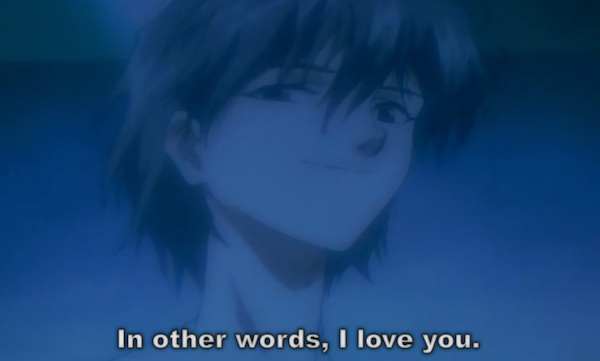
This declaration of romantic feelings is a big deal as such open expression of romance is shied away from in Japanese culture. Much like the queer relationship in the original Sailor Moon anime, Shinji and Kaworu never kiss, but by the end of the episode when it’s revealed that Kaworu was a nonhuman agent of the Angels, Shinji is forced to kill him while piloting the robot. Shinji later says that he loved Kaworu, too. This tragic ending and dehumanization of a queer character reflects Japan’s attitude toward what is considered sodomy and shows the unconscious censorship of queer romance in anime. However, episode 24 created an even bigger stir with censorship, because around the time this episode aired in Japan, Neon Genesis Evangelion lost its funding. The last two episodes of the series, 25 and 26, have been widely criticized for their haphazardly pieced together visuals, abstract concepts and heavily internal psychoanalysis. There has been much debate on this subject and the studio’s reasoning, but given the content of 24th episode and the timing of the studio’s choice, one could imply that censorship was made over the queer relationship.
When Neon Genesis Evangelion was distributed to American audiences, controversy came from a different standpoint and forced certain visuals from the series to be censored. The series contains strong Christian themes and imagery, including crosses and biblical names. In the controversial last two episodes of the series, Shinji sees one of the Angels nailed to a cross, its face twisted and its body bloated and inhuman. This image was censored by some American networks and did not air. Oddly enough, the relationship between Shinji and Kaworu remained relatively the same in the American version of the series, probably due to its already vague nature.
Hideaki Anno insisted the choice to make the last two episodes so abstract was intentional, but in 1997, two films Death & Rebirth and The End of Evangelion were made to rectify the ending of the series. The End of Evangelion contains stronger sexual content than the anime series, particularly an imlpied shot of Shinji masturbating over the unconscious body of Asuka, a female character, and a highly surreal image of naked Shinji being straddled by Rei, another female character, also nude.

The image of Shinji and Rei resembles sex, but after a moment of this surreal coitus, Shinji states, “But this isn’t right. This feels wrong.” Shortly after, the film cuts to Kaworu once again asserting the words, “I love you” to Shinji. Though this instance isn’t a confirmation of Shinji’s sexuality, it suggests he prefers men, or is at least on the bisexual/pansexual spectrum. This series and its films showcase an attempt by the shōnen genre to address queer representation and the censorship that got in the way.
Highly regarded as the crowning glory of queer anime, Yuri. On Ice is a recent series that will go down in history as a major game changer. The anime was written by Mitsurō Kubo and directed by Sayo Yamamoto, two women who got the series licensed by Crunchyroll in 2016. This series was marketed as a shōnen within the sports subgenre as it follows 23 year-old Japanese figure skater Yūri Katsuki in his journey to revitalize his skating career. From the first episode, Yūri is portrayed as having an obsession for gold medalist, Viktor Nikiforov, an older Russian skater. Viktor agrees to coach Yūri in his quest for a gold medal. Intimacy develops between Yūri and Viktor with strong hints of sexuality and romance. In the second episode, Viktor bathes in the Katsuki family hot spring and displays his naked body to Yūri.
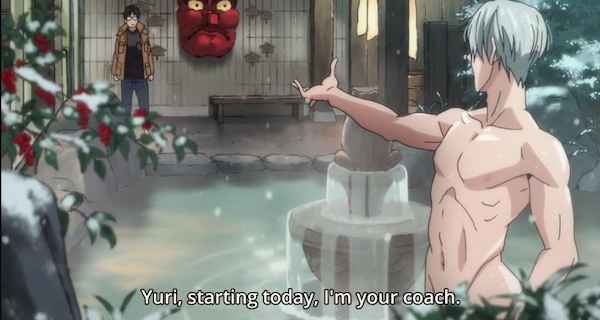
The visuals of this scene situate flora over Viktor’s groin to censor his genitals. A cut away from this image shows Yūri blush. In later episodes, Viktor asks Yūri about his romantic history, sleeps with him in his bed, and casually strokes Yūri’s face during and outside of skating practice. Early on, this anime defied conventions of the sports genre and dipped into tropes of shōjo, focusing on the subtextual romance between Viktor and Yūri. The construction of this romance can be compared to the relationship between Uranus and Neptune in Sailor Moon, but with two males, one of which being the anime’s protagonist. It is important to mention that unlike Sailor Moon and Neon Genesis Evangelion, Yuri. On Ice was distributed to Japan and the United States at the same time through online streaming. However, even with such a modern anime that seemed to break major boundaries, censorship of the queer relationship still occurred.
Episode seven of Yuri. On Ice caused a major stir amongst Japanese and American fans alike when an implied kiss between Yūri and Viktor aired. The kiss takes place after Yūri has skated a successful number and Viktor embraces him in celebration. The way the kiss is drawn shows the men coming together, but Viktor’s arm blocks their mouths. The scene then cuts to an over the shoulder shot of Viktor leaning in and Yūri’s eyes closing, a blush at his cheeks.
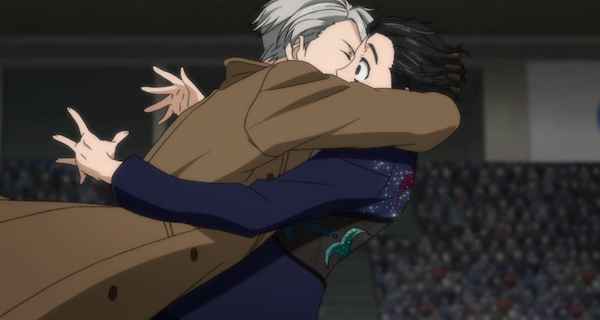
The kiss is highly implied, but censored in the visuals. This scene has caused major controversy, as some believe the two are merely hugging, while others believe it was a cheap move to imply a kiss and not show it full on. To complicate things, episode ten shows Viktor placing a golden band on Yūri’s left ring finger while the two visit a church. Viktor insists it is a “promise ring” that promises a gold medal, and even when their friends assume the men have just been married, Yūri asserts this is not true. In the last episode of the series, Yūri jokes with Viktor about getting married in the event he wins gold, but when he does not win gold, they remain in ambiguous queer limbo.
Viktor and Yūri are not the only ambiguously queer characters of the series. Yūri’s young rival Yuri Plistesky shares a relationship with another man in an even more vague depiction than the relationship Viktor and Yūri presents. A highly sexual character, Christophe, is obsessed with butts and often orgasms mid-routine. In the eleventh episode, Christophe is shown at his apartment with another man who comments on how he “always comes early” perhaps implying a sexual relationship between the two.
Although Yuri. On Ice presents what seems like progressive queer representation, the relationships are continuously written and drawn to be ambiguous, thus emphasizing Japan’s assertion that the queer community remain in the closet. The creators of the anime have never confirmed the romance between Viktor and Yūri, stating on Twitter, “In the end we’re not going to tell anyone what to think, or rather, compel anyone to interpret it in a certain way. So please decide it for yourself.” (Kubo) However, with an animated film suspected to premiere by 2019, we can hope for some answers to the ambiguity.
With the dubbing censorship of Sailor Moon and the cutting of funds for Evangelion, as well as the visual and narrative ambiguity of Yuri. On Ice one may wonder if there are any positive examples of queer relationships in anime. The recent 2018 remake of Cardcaptor Sakura continues the subtextual background relationship between two high school aged boys and the unrequited attraction of one young female character for another. Sound! Euphonium (2013), an anime about a high school concert band rewrote the manga’s relationship between the main girl and a boy so the protagonist’s attraction was directed at another girl instead. Puella Magi Madoka Magica (2011), a subversion of the magical girl genre, shows girls kissing other girls despite a tragic plot and ambiguously platonic relationships. Aoi Hana (2009) portrays a relationship between young queer girls coming to terms with their sexuality. Wandering Son (2011) depicts two middle schoolers discovering their transgender identities and experimenting with queer romance. These anime are all fine and good in their own ways, but I feel one in particular reaches rather high on positive queer representation in anime for its complexity and authenticity. The best example I can find of non-sexualized, well-rounded queer representation in anime is the Studio Bones series No.6.
Based on a novel series and manga by Atsuko Asano, the anime No.6 is set in a walled-in, dystopian city called No.6. The series follows sixteen year-old Shion in his discovery of the government’s brainwashing of its residents, as well as the scientific experiments No.6 has done on a goddess-like bee spirit. Shion is saved from imprisonment by Nezumi, another boy his age who fosters a hatred for No.6. Throughout the series, Shion and Nezumi uncover the evils done by the government, infiltrate the facility where they keep the bee spirit and eventually set her free, taking down the city walls in the process. During the adventure, Shion and Nezumi develop a romantic relationship, and despite dangerous situations that complicate their intimacy, the series does not shy away from the queer representation of these characters.
In the first episode of the eleven episode series, Shion’s female best friend, Safu, asks him to have sex with her, to which Shion is visibly flustered and turns her down, already hinting at his sexuality. Throughout the rest of the series, escaped Shion and Nezumi live together in a bunker outside the No.6 walls, share two onscreen kisses and profess their romantic feelings for one another. At one point, Nezumi tells Shion he should leave because of his desire to save No.6, but Shion cannot because he “is drawn to Nezumi.” The Japanese translation of this line closely resembles the phrase “I love you” and it can be assumed Shion’s words hold similar meaning, despite the current society’s apprehension to say those words. This could be an example of Japan’s censorship of romance, though stripping away Western society’s standards of love to see the Japanese standard is important here. On various occasions in No.6, Nezumi tells others that Shion belongs to him, and Shion continues to profess his attraction through phrases similar to “I love you.” Nezumi often pets Shion’s face, strokes his hair, and makes sexual innuendo jokes when the two are in private. Nezumi is also a member of a theater group and regularly performs in drag, echoing a positive aspect of the gay community from real life. Shion and Nezumi are willing to kill for one another and by the end of the series, they share another onscreen kiss after taking down the No.6 government.
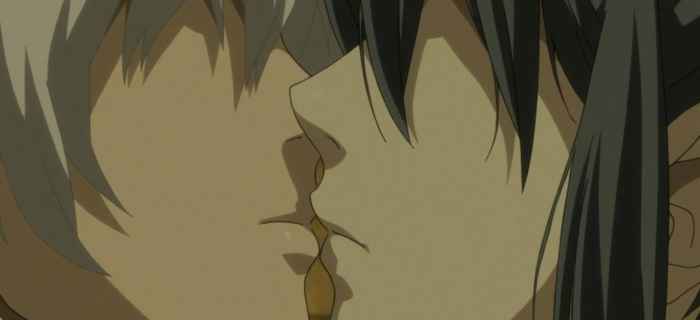
According to the anime creator, Shion and Nezumi are in a romantic relationship. Asano stated in a 2011 interview, “I like writing about the connection between people of the same sex, not limited to boys. With the opposite sex, the two of them being drawn to each other results in romantic love, like a married couple….” and when asked about their kiss, she responded, “I was trying to show that Shion is incredibly in love with Nezumi, and that Nezumi is extraordinarily drawn to Shion.”
However, No.6 is not entirely clear of censorship, though the anime is a unique case that subverts the typical censorship of queer representation. The manga of the series shows images of Shion and Nezumi sharing a bed together, flirting more, and further professing their attraction to one another. It could be said that in the adaptation of a long manga, certain aspects of the relationship had to be cut to save on money and time. At the end of the manga, Nezumi leaves Shion and after three years, has never returned to him. The anime does not reflect the same tragic ending of the manga. In the last episode of the anime series, when Shion and Nezumi make it out of the facility and see the walls of No.6 have fallen, Nezumi kisses Shion on the lips and the shot cuts to Shion looking out at the newly opened up city. The anime never clarifies if Nezumi left him, nor does it cover the three year gap of the manga’s epilogue. In this way, the anime may actually show a more positive depiction of the relationship between Shion and Nezumi than the manga. The anime censors the melancholy of the manga’s ending and opts for a more positive representation of the queer relationship.
An unfortunate part of No.6 ‘s history in the anime industry is how underappreciated the series is. The novels have never been officially translated to English and the manga is very hard to come by. Many anime fans have dismissed this series due to its serious themes and dystopian setting. The series also suffers from a genre mix that is hard to market within the anime industry. Like Neon Genesis Evangelion, No.6 is a science fiction series that deals with dark topics like genocide, brainwashing, and mental illness. However, the series also features heavy handed romance and was categorized as a shōjo when originally produced. This classification created confusion among readers and viewers because of the lack of a female protagonist or common conventions of the shōjo genre. No.6 has since been claimed as shōnen-ai, the adult version of “Boy’s Love.” Unfortunately, the series is still widely unknown to the anime community.
In January of 2018, I conducted an anonymous online survey of over 200 anime fans. 35% of surveyed individuals said anime negatively represented queer relationships, 52% said anime was somewhat positive in its representation, and only 5% of surveyed individuals said anime represented the queer community positively. Many respondents discussed how representations of female/female relationships are more common in anime, but can be easily dismissed as platonic because of society’s view of female romance. Other responses talked about how stereotypical many queer male characters are in their portrayals, often being made into predators or feminized for comedic effect. One response said, “MLM are more likely to be portrayed as disgusting or creepy. WLW are more likely to be portrayed as either childish or sexually appealing.”(Note: In this case, MLM is “Men who Love Men” and WLW is “Women who Love Women.”) Another respondent stated, “There are rarely anime that explore sex or sexuality in general as anything more than pornographic or exploitative… And when an anime DOES tackle the topic of sex or sexual interests it’s in a non-explicit or unhealthy way.” These responses shed a light on the ways fetishizing in yaoi and yuri bleed into anime. 88% of the respondents to my survey identified as being somewhere on the queer or LGBT spectrum, which shows that while anime attracts marginalized communities, there is a lot of work to be done in how it represents them. The responsibility of the anime industry to acknowledge its queer fans lingers as sexuality is still a taboo topic in Japan, and other parts of the world, including the United States.
There are currently no major laws against homosexual activity in Japan, but same sex marriage is not yet legal at a national level. Sexual orientation is not a protected class in the human rights code, but in recent times, Japanese celebrities and politicians have openly come out. A Japanese journal recently wrote about this year’s Tokyo “Rainbow Pride” Parade bringing over 7,000 marchers and about 150,000 attendees to the festival celebrating sexual diversity. This was a record high. There is genuine hope for change in the treatment and representation of the queer community in our world and the anime world, and for that reason I feel confident opening the door of my own closet to bring awareness, demand positivity and insist we no longer settle for censorship.

Anno, Hideaki. Neon Genesis Evangelion. Gainax, Tatsunoko Production, 1995.
—. The End of Evangelion. Gainax, Production I.G/ING, 1997.
—. RahXephon Complete, interviewed by Yutaka Izubuchi. Section 23 Films, 2003.
Asano, Atsuko. NO.6 Complete Guide. KoÌ Dansha, 2011.
Bennett, Nicholas. “Queer Representation in Anime.” Questionnaire. SurveyMonkey.com. 2018.
Brenner, Robin E. Understanding Manga and Anime. Libraries Unlimited, LLC, 2007.
Fox, Emily., Makousky, Nadia., Polvi, Amanda., & Sorensen, Taylor. “Naoko Takeuchi, creator of Sailor Moon.” Voice from the Gaps. University of Minnesota, 2009.
Kon, Chiaki. Sailor Moon Crystal, created by Naoko Takeuchi. Toei Animation, 2015.
Kubo, Mitsurō. Yuri. On Ice. MAPPA, Crunchyroll, 2016.
@kubomitsurou. “ 結局は誰にも教えてないというか7話のことは誰にも押し付けてない ので自分の判断で決めつけてくださいね” Twitter, 8 Dec. 2016, 4:01 a.m., https://twitter.com/kubomitsurou/status/806831104825008133.
Lamarre, Thomas. The Anime Machine: A Media Theory of Animation. University of Minnesota Press, 2012.
Morris-Suzuki, Tessa. “The Invention and Reinvention of ‘Japanese Culture’.” The Journal of Asian Studies, Vol. 54, No. 3., Association for Asian Studies, 1995.
Nagasaki, Kenji. No.6, created by Atsuko Asano, Studio Bones, 2011.
Nakajima, Maki. “Record Number of 7,000 People March in ‘Tokyo Rainbow Pride’ Parade.” The Mainichi, General Digital News Center and Miyuki Fujisawa, 2018.
Pflugfelder, Gregory M. Cartographies of Desire: Male-Male Sexuality in Japanese Discourse 1600-1950. University of California Press, 2007.
Roncero-Menendez, Sara. “Sailor Neptune and Uranus Come Out of the Fictional Closet.” The Huffington Post, TheHuffingtonPost.com, 2016.
Satō, Junichi., Ikuhara, Kunihiko., & Igarashi, Takuya. Sailor Moon, created by Naoko Takeuchi. Toei Animation, 1992.
Suan, Stevie. “Anime’s Performativity: Diversity through Conventionality in a Global Media-Form.” Animation: An Interdisciplinary Journal. Vol. 12. Graduate School of Manga Studies, Kyoto Seika University, 2017.
Tamagawa, Masami. “Coming Out to Parents in Japan: A Sociocultural Analysis of Lived Experiences.” Sexuality & Culture. Springer Science+Business Media, LLC, 2017.